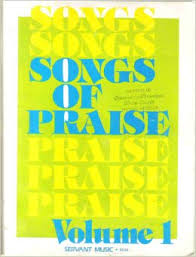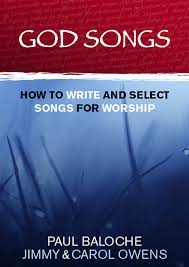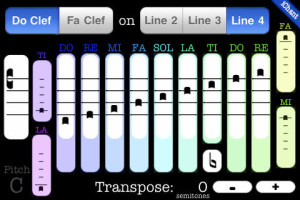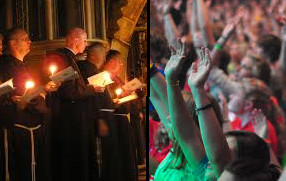How Praise and Worship Led Me to Gregorian Chant
When I was growing up in New York City (as an Episcopalian), I was part of a dual parish set up. Two churches worked together as a team, sharing much of the same resources in the same neighborhood. One of them, was a traditional service complete with choir, classical music, topped off with a highly respected, nationally-known liturgical composer. The other one, though, was dipping its toes into the beginning of what is now known as the praise and worship genre. We’re talking guitars, flutes, and spirited covers of songs from the Songs of Praise songbook.
In my high school years, I found myself gravitated toward the latter group. A whole lot more fun. There were raised hands, and songs that came forth from the community that came from the Church of the Redeemer out of Houston, Texas. Which in itself, was influenced by the Charismatic Renewal. I do not know much of any of this; I was just a high-schooler who was on fire for the Lord and loved the praise. Comparing the two, while traditional hymnody, from their hymnals, while they had my respect, it was the contemporary form that I loved.
Years later, when I was searching for a college Christian group to help sustain me, one of the selling points for the group I ultimately stuck with, used the same musical resource as that of my preferred parish. And it was here, that I had learned my chops in playing the guitar. Over the years, I found myself growing in my faith to the point that I would become a Roman Catholic. And as a Catholic guitarist, occasionally people would ask me to choose the songs for liturgy. There was even a time, where I was a contemporary choir leader for a local parish.
Being a Contemporary Choir Leader
Doing this is such a joy. It gave me a freedom to dig into the missallette or the hymnal. Or, if it was for a youth event or charismatic renewal liturgy, I would bring out some of the popular praise and worship choruses that everybody knew and loved.
It wasn’t until much later, that I discovered Musicam Sacram from Vatican II. They had their own recommendations for music in the liturgy. And throughout this document, there was always an interest in traditional Gregorian chant. In all the years I had become a Catholic, I could only count with one hand the number of liturgies that’s took their recommendations seriously; that chant be given pride and place. That the Roman Gradual ought to dictate what is sung at Communion.
Reading this could be very intimidating. After all, ownership of a Roman Gradual is rare; it costs an exorbitant amount of money. Having no training in proper technique. Being intimidated by musical notation with square notes. And, of course, Latin. It was also very foreign.
I’m sure that it moved some people, and I have great respect for the style. But I could not envision myself doing this.
Growing as a Worship Songwriter
Over time, I started growing as a songwriter. Yes, I learned much of the craft from writing parody songs. But I also tried my hand at writing praise and worship songs, my real love. As I saw it, a simple chorus has tremendous power for a entire congregation in unison to pray vibrantly together.
With my sights set on improving my craft, I kept up-to-date with worship trends, as well as reading books on the subject. One such book, GodSongs by Paul Baloche and Jimmy and Carol Owens, was revelatory. To this day, I consider that book to be one of the great books about songwriting craft, period, and not merely songwriting craft from a praise and worship musician stand point.
But was is one chapter that you attention on a subject that I had never considered before. And the concept was quite simple. They made mention that, in many cases, if one is singing about the actions of lifting, raising, or ascending, it may be a good idea to somehow so that the melody lifts upwards with those words. A fine example of such is the contemporary standard I Am the Bread of Life by Sr. Suzanne Toolan.
And I will raise him up
And I will raise him up
And I will raise him up
And I will raise him up on the last day.
Conversely, they made mention of songs in which you humble yourself, or are brought down lower, with a melody that descending. I remembered an older praise and worship song called I Bow Down. In it, the term “bow down” gives an impression of actually lowering oneself, humbling oneself. It was a subtle, melodic shift that I had never noticed before. By doing it in this manner, they insist, you are complementing the words of the song with a melody that brings depth to what you’re singing.
Making Every Word Count
Only until years later, when I decided to give Gregorian chant a go again, that I realized that the concept of making every word count, in terms of its melody, began to make sense. Because while with a contemporary praise song, specific words are brought to life by individual melodies ascending or descending, Gregorian chant applies to all words. Every word has a melodic interpretation. Every melody is a language form in itself.
If there’s one thing you can say about Gregorian chant in its favor is that it’s not about being grafted to a popular musical riff, to the points where some words work, and some words do not. In a contemporary worship setting, the melody, the tempo, these are all most important. The hymn as powerful as it is, can have multiple melodies, associated with the words.
Not so with Gregorian chant. In this case, every word has its own melodic riff. And the reason why that riff exists for each word is so to make those words themselves come alive. And they do this without any care of modern musical conventions, repeating melodies, popular styles. The words are important, the words are served, even to the point that popular songwriting tropes, those which render a song memorable in its own right (but also trapped within its own time, its own genre expectations), are simply not heeded.
Once I realized that every word works as its own prayer, and each have its own melody, that Gregorian chant began to make sense. I’m not just praying a Bible verse, I am praying it in such a manner that I do not have to chistle it in a songwriter’s predetermined melody, irregardless of that songwriter’s musical temperament. No. While such a melody makes a song easier to grasp for modern ears, the Scripture may lose something in its translation to modern pop sensibilities, which has a tendency to date faster with each passing year. Nothing against modern songs; we need them and they help us worship with its own gifts. But to have God-breathed words fully unshackled from modern musical conventions, so that every melody is its own interpretation of a Scripture verse, that is something special.
What’s Lost In Current Translations
That said, I am disappointed in the translation that has been offered by the International Commission on English in the Liturgy (ICEL). Not because I disagree with its attempts to match accuracy with beauty (which it does quite well). But rather, because what is needed is a word-for-word translation, one that keeps the order of the words in the order they are originally presented. Therefore melodic emphasis upon certain English words are not on the same words in the Latin.
Granted, I understand that Latin’s ordering of words comes off rather clumsily in English language. Nonetheless, while it is beautiful to read the English translation for the propers, I almost wish they came up with a word for word translation of the chant, so that the melodies of the words would be consistent.
Conclusion
Learning Gregorian chant, is not all that difficult. Especially due to the iChant-Gregorian app, that is relatively easy to master. Using this, and MP3 recorder, and a free copy of The Roman Gradual, (h/t ccwatershed), it is now possible to incorporate Gregorian chant in any liturgy. No instruments needed. Vocals only. And, wow, does it really add something to Eucharistic worship.
I still love Praise and Worship music, along with hymns and other musical forms of worship. Ideally, in my dream liturgy, I would incorporate all forms in a single liturgy, so to touch upon the strengths of each musical style to benefit the particular parts of the liturgy, that gives glory to God. But when it comes to the Communion Antiphon I make sure to practice the chant well enough, so that the power of the liturgy may come to life.
What are your thoughts about Gregorian Chant and/or Praise and Worship Music? Have you tried to incorporate both in a single liturgy? Please share below.













In my experience, when Gregorian Chant is used for mass it becomes a performance by the Cantor/Choir as the congregation stares blankly at the choir as they listen to the unfamiliar tune. I have not seen it garner improved participation by the congregation. Our liturgy coordinator is suggesting that we use chant for the entrance and recessional hymns. I’ve attended some of the masses where they have tried this and though the cantor was excellent, it made for a somber lack-luster entrance and recession. If chant is to be used, maybe repeated usage of the exact same chant multiple times could make it easier for the congregation to learn. I do think chant could be effectively used for the season of Lent. It seems that one should carefully consider the season, your congregation, and ask for objective secondary party evaluation of the effectiveness and impact on participation.
Very good points. I can’t say I disagree. And oftentimes that’s when many traditional folks would come out and say that the lack of outward congregational participation is a feature, not a bug.
I’m still at the point where I believe the opening should be a hymn, but one with the words rooted in the text of the Introit (based in Scripture). And the Communion Antiphon be chanted (it’s only one minute long), after which either a simple praise chorus or a familiar contemporary worship song (God-directed/praise-centered) is augmented. Then silence. The chant really adds to the power of Communion, having it medley to a contemporary praise chorus makes it easy for congregants to join in without the books.
If, after awhile, the congregation becomes familiar with Gregorian chant in this manner, then having the Introit done in chant during particular special seasons/Feast Days could be a next logical step. But I’m of the belief that if one were to take a deep step with the congregation towards the past, then in the same service they ought to mirror that with an equally deep step with the congregation towards the current, so long as the flow is consistent. And I believe it can be.
As an aside, I often wonder–considering the technology we have available–if it is ever possible to have the complexity of a Gregorian chant accessible for a modern generation, and how to do so. Many parishes are beginning to forego hymnals and missallettes, and are building Powerpoint screens into their architecture. I think this can be a positive step, if done right. I can only wonder if a live rendering of a “bouncing ball” over musical notation can ever happen.
Anyway, thanks for your thoughts.